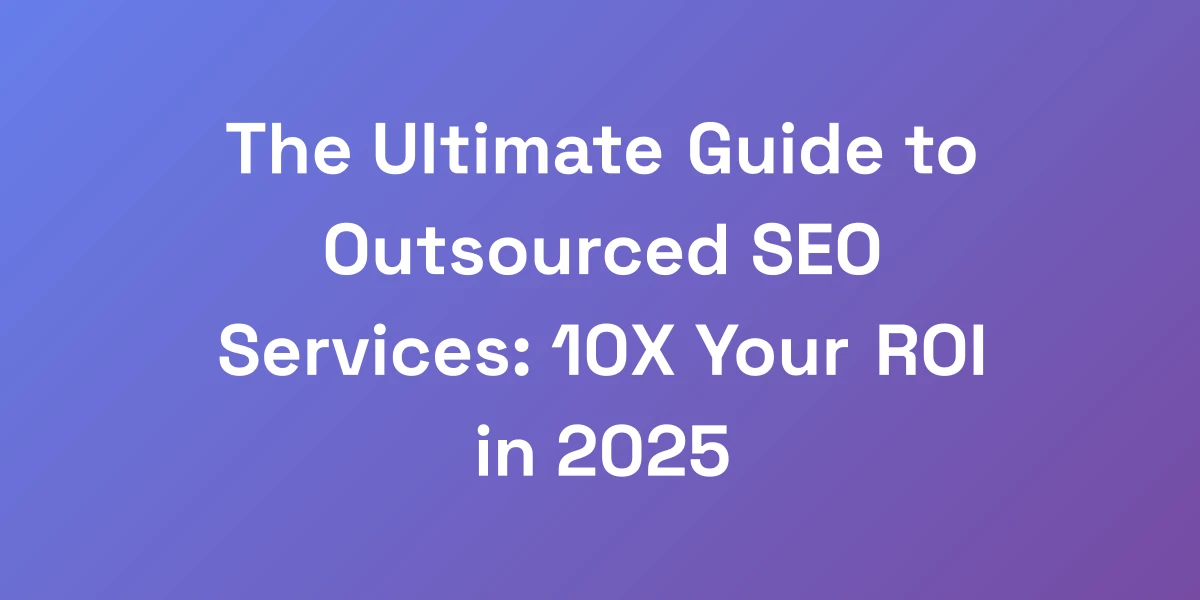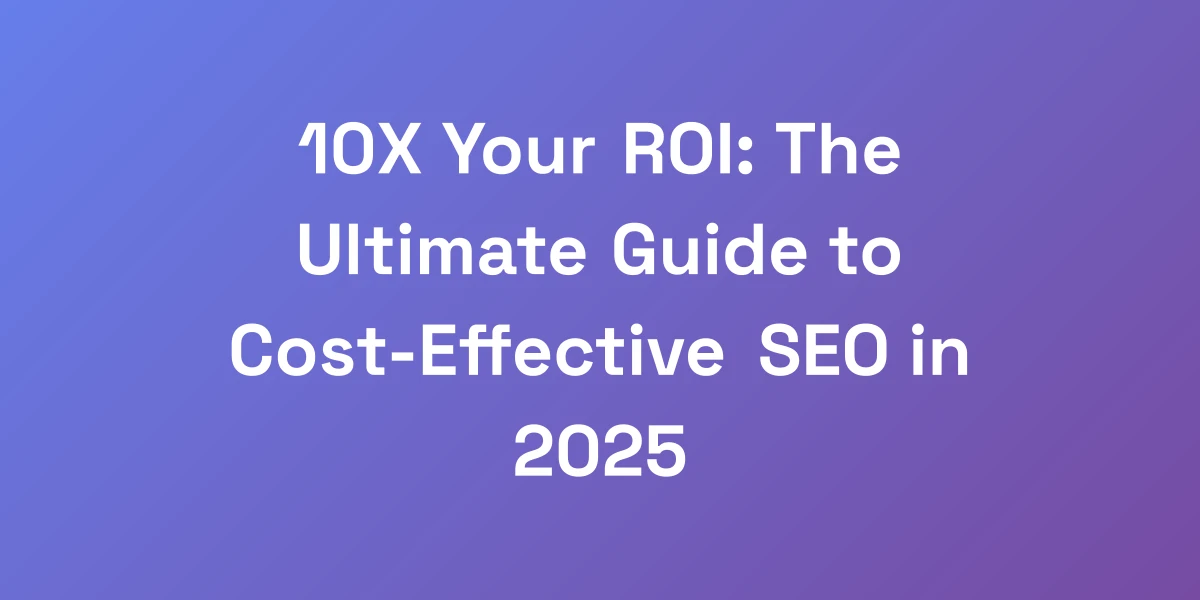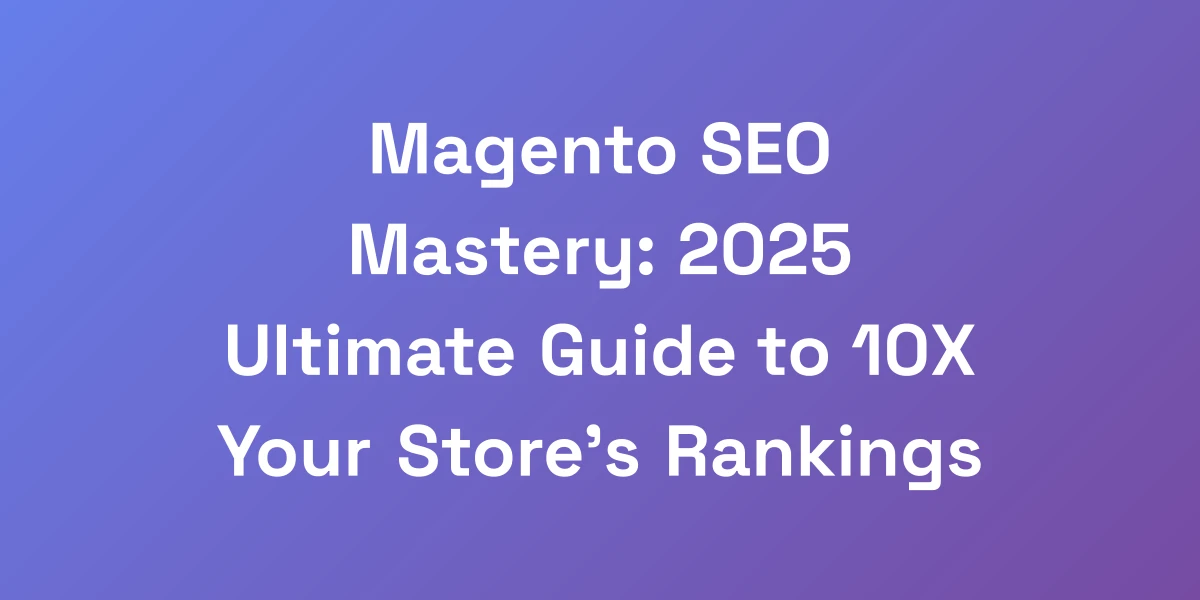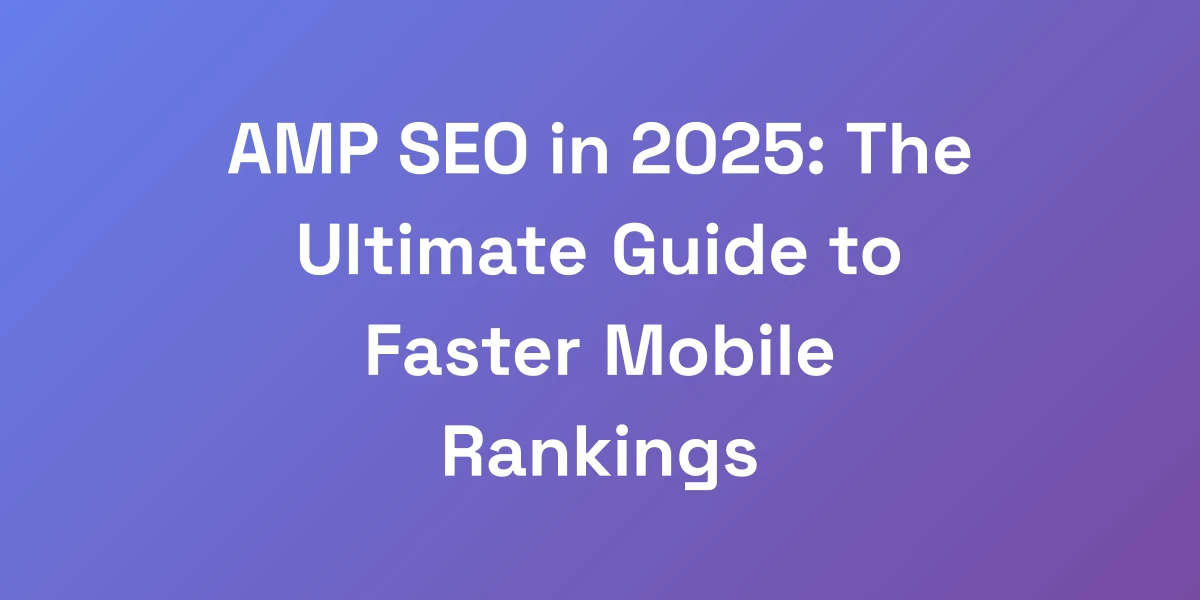
SEO A/B Testing: The Ultimate Guide to 10X Your Rankings in 2025
Apr 9, 2025 | By [email protected]
SEO A/B Testing: The Ultimate Guide to 10X Your Rankings in 2025
Ever felt like your SEO efforts are hitting a wall? You’re not alone.
We’ve all been there—spending hours optimizing, tweaking, and fine-tuning, only to see minimal results.
But what if there’s a way to supercharge your SEO strategy and 10X your rankings by 2025? SEO A/B testing is the secret weapon most aren’t leveraging correctly.
Let’s get real: 90% of SEO A/B tests are a complete waste of time. Not because A/B testing is flawed—it works brilliantly when done right.
We’ve poured millions into perfecting SEO strategies, and I’m here to share what separates the top 1% from the rest. Ready to transform your approach and dominate the search rankings?
Why Most SEO A/B Tests Fail (And What the Top 1% Do Differently)
Let me hit you with some truth: 90% of SEO A/B tests are a complete waste of time. Not because A/B testing doesn’t work—it absolutely does—but because most people are doing it completely wrong.
We’ve spent millions testing what moves the needle in SEO, and we’re going to show you exactly what separates successful tests from failures. The difference between ranking #1 and not ranking at all often comes down to how you structure your tests. Here’s what the top performers know that others don’t.
The Hidden Cost of Poor SEO Testing
When SEO A/B tests fail, the financial and opportunity costs can be staggering.
Imagine pouring resources into a test that not only fails to deliver results but actually harms your rankings. That’s the hidden cost.
- Lost Revenue: Lower rankings mean fewer clicks and conversions.
- Wasted Resources: Time, money, and effort spent on ineffective strategies.
- Brand Damage: Consistent poor performance can erode trust and credibility.
It’s crucial to recognize these costs and implement strategies to avoid them.
Common A/B Testing Mistakes That Kill Rankings
Why do so many SEO A/B tests fail? Let’s break down the top mistakes:
- Testing Too Many Variables: This makes it impossible to pinpoint what’s affecting your results.
- Ignoring Statistical Significance: Decisions based on insufficient data lead to unreliable outcomes.
- Poor Test Duration: Tests that are too short or too long can be skewed by external factors.
- Improper Use of Canonical Tags: This can cause duplicate content issues and confuse search engines.
By avoiding these pitfalls, you can ensure your tests are both reliable and effective.
The ROI Framework for Successful SEO Tests
Understanding and measuring ROI is essential for justifying SEO tests.
Here’s our framework:
- Define Clear Objectives: Know what you’re testing and why.
- Set Measurable Goals: Whether it’s increasing CTR or boosting keyword rankings, have clear metrics.
- Analyze Cost vs. Benefit: Compare the investment against potential gains.
- Iterate Based on Results: Use data to refine and improve future tests.
This structured approach ensures that each test is aligned with your business goals and delivers tangible benefits.
Why Traditional A/B Testing Fails for SEO
Traditional A/B testing methods often fall short when applied to SEO because:
- Lack of Control: Search engines can behave unpredictably, making it hard to isolate variables.
- Dynamic Algorithms: Google’s algorithms are constantly evolving, which can affect test results.
- Content Lag: Changes in SEO take time to reflect in rankings, unlike immediate changes in user experience.
We need a more robust and nuanced approach to SEO A/B testing that accounts for these unique challenges.
The Mindset Shift Required for SEO Testing Success
Success in SEO A/B testing isn’t just about tools and techniques—it’s about mindset.
We need to think like data scientists, embracing experimentation and continuous learning.
- Be Patient: Understand that SEO results take time to manifest.
- Stay Objective: Let the data guide your decisions, not your biases.
- Embrace Failure: Learn from unsuccessful tests to refine your strategies.
This mindset shift is crucial for executing tests that lead to real, measurable improvements.
The Science Behind SEO A/B Testing That Actually Works
Listen closely, because this is where most “experts” get it wrong.
SEO A/B testing isn’t just about changing title tags and hoping for the best. It’s about systematic experimentation that produces measurable results.
We’re going to break down the exact methodology we use to test changes that drive millions in organic traffic. The key is understanding the relationship between user behavior signals and search engine algorithms—and leveraging that knowledge to your advantage.
Understanding Statistical Significance in SEO Tests
Statistical significance is the backbone of reliable A/B testing.
- What It Is: It measures the likelihood that your results are not due to chance.
- Why It Matters: Without significance, your test results are unreliable.
- How to Achieve It: Ensure sufficient sample size and proper test duration.
By achieving statistical significance, we can confidently make data-driven decisions that positively impact our SEO efforts.
Key Metrics That Actually Matter
Focusing on the right metrics is crucial for meaningful insights.
- CTR (Click-Through Rate): Measures how effective your titles and meta descriptions are.
- Bounce Rate: Indicates how engaging your content is to visitors.
- Conversion Rate: Reflects the effectiveness of your calls to action.
- Keyword Rankings: Tracks your position for targeted keywords.
These metrics provide a comprehensive view of your SEO performance and help identify areas for improvement.
Setting Up Control Groups for Accurate Results
A control group is essential for isolating the impact of your changes.
- What It Is: A subset of your pages or traffic that doesn’t undergo the test changes.
- Purpose: Acts as a baseline to compare against the test group.
- Implementation Tips: Randomize assignment and ensure the control group is representative.
Properly setting up control groups ensures that your test results are accurate and actionable.
Tools and Technologies for Precise Testing
Using the right tools can make or break your SEO A/B testing efforts.
- SearchPilot: A leading platform for server-side testing, ensuring consistency between users and search engines.
- seoClarity: Simplifies experiment setup and provides robust analysis features.
- SplitSignal: Utilizes Google’s Causal Impact model for clear insights.
- VWO’s SEO A/B testing tool: Helps you optimize your tests effectively.
These tools provide the precision and reliability needed to conduct effective SEO A/B tests.
Measuring Impact on Search Rankings
Tracking how your tests affect search rankings is vital for success.
- Before and After: Compare keyword positions before and after the test.
- Trend Analysis: Look at ranking trends over time to identify patterns.
- Competitive Benchmarking: Assess how your rankings stack up against competitors.
Effective measurement ensures you understand the true impact of your SEO changes.
Timeline Requirements for Valid Results
Timing is everything in SEO A/B testing. Rushing can lead to unreliable results, while waiting too long can delay actionable insights.
- Optimal Duration: Typically a few weeks, depending on traffic and test complexity.
- Consistency: Maintain the test conditions consistently throughout the duration.
- Avoiding Seasonal Bias: Ensure your test period is free from seasonal fluctuations that can skew results.
Adhering to the right timeline maximizes the reliability and usefulness of your test outcomes.
The Ultimate SEO A/B Testing Framework for 2025
I’m about to give you the exact framework we use to generate consistent wins in SEO testing.
This isn’t theory—it’s the same system that’s helped our clients achieve 300%+ growth in organic traffic.
The key is in the sequence: you need to test the right elements in the right order, with the right measurement protocols. Here’s the step-by-step system that will transform your SEO testing from guesswork into a scientific process.
Phase 1: Preparation and Baseline Analysis
Before diving into tests, establish a solid foundation.
- Audit Current Performance: Identify strengths and weaknesses in your existing SEO strategy.
- Set Clear Objectives: Define what you aim to achieve with your tests.
- Gather Baseline Data: Collect data on key metrics to serve as a comparison point.
Preparation ensures that your tests are grounded in reality and aligned with your overall goals.
Phase 2: Hypothesis Development
Every test starts with a hypothesis—a statement predicting the outcome of your changes.
- Identify Variables: Determine which elements you want to test (e.g., title tags, meta descriptions).
- Formulate Hypotheses: Create clear, testable statements (e.g., “Changing the title tag will increase CTR by 15%”).
- Prioritize Tests: Focus on hypotheses that have the highest potential impact.
Strong hypotheses guide your testing efforts and set the stage for meaningful results.
Phase 3: Test Implementation
Now it’s time to execute your planned changes.
- Create Variations: Develop the alternative versions you’ll be testing against the control.
- Deploy Changes: Implement the test variations using your chosen auto SEO tools.
- Ensure Consistency: Make sure all test conditions are consistent across control and variant groups.
Proper implementation is critical for ensuring that your test results are accurate and reliable.
Phase 4: Data Collection and Analysis
With your tests running, it’s time to gather and scrutinize the data.
- Monitor Key Metrics: Track performance indicators such as CTR, bounce rate, and keyword rankings.
- Ensure Data Integrity: Verify that the data collected is accurate and free from anomalies.
- Analyze Results: Compare the performance of the test variations against the control group.
Detailed analysis helps you understand the effectiveness of your changes and informs your next steps.
Phase 5: Result Implementation
Based on your analysis, decide how to proceed with your findings.
- Implement Winning Variations: Roll out the successful changes to your entire website.
- Iterate and Improve: Use insights from the test to refine and enhance future strategies.
- Document Learnings: Keep detailed records of what worked and what didn’t for future reference.
Effective implementation ensures that your successful test results translate into real-world improvements.
Advanced Testing Variations
Once you’ve mastered the basics, consider more sophisticated testing methods.
- Multivariate Testing: Test multiple variables simultaneously to understand their combined effects.
- Personalized Testing: Tailor tests based on user segments for more targeted insights.
- Automated Testing: Use AI and machine learning to automate and optimize your testing processes.
Advanced testing techniques can uncover deeper insights and drive even greater SEO performance improvements.
High-Impact SEO Elements Worth Testing (And Those to Avoid)
After analyzing thousands of tests across different industries, we’ve identified the exact elements that move the needle in SEO.
Here’s the truth: 80% of your results will come from testing 20% of your page elements.
We’re going to show you which elements actually matter and which ones are just burning your time and resources. This isn’t about testing everything—it’s about testing the right things in the right way.
Title Tag Testing Strategies
Titles are the first thing users see, making them critical for both SEO and CTR.
- Keyword Placement: Experiment with the placement of primary keywords.
- Length Optimization: Test different title lengths to see what performs best.
- Emotional Triggers: Use power words to evoke emotions and drive clicks.
Effective title tag strategies can significantly boost your search visibility and click-through rates.
Content Structure Experiments
How you organize your content affects both user experience and SEO.
- Header Optimization: Test different H1, H2, and H3 structures for better readability and SEO.
- Paragraph Length: Experiment with varying paragraph lengths to enhance engagement.
- Multimedia Integration: Incorporate images, videos, and infographics to see their impact on user retention.
Optimizing content structure can lead to longer dwell times and lower bounce rates, both of which are positive SEO signals.
Technical SEO Elements to Test
Technical elements are the backbone of SEO, ensuring that your site is crawlable and user-friendly.
- Page Speed: Test different speed optimizations to improve load times.
- Mobile-Friendliness: Ensure your site performs well on mobile devices.
- URL Structures: Experiment with different URL formats for better indexing.
Fine-tuning technical SEO elements can enhance overall site performance and search engine rankings.
User Experience Factors
User experience (UX) directly impacts SEO performance by influencing user behavior signals.
- Navigation Menus: Test different navigation structures for ease of use.
- Call-to-Actions: Experiment with the placement and design of CTAs to improve conversions.
- Interactive Elements: Incorporate quizzes, sliders, and other interactive features to engage users.
Enhancing UX can lead to better user engagement, lower bounce rates, and higher rankings.
Schema Markup Variations
Schema markup helps search engines understand your content, potentially leading to rich snippets.
- Types of Schema: Test different schema types (e.g., FAQs, reviews) to see which perform best.
- Implementation Methods: Experiment with microdata vs. JSON-LD formats.
- Depth of Markup: Assess the impact of adding detailed schema elements versus basic ones.
Effective schema markup can enhance your search listings and improve click-through rates.
Internal Linking Patterns
Internal links guide users and search engines through your site, boosting SEO.
- Anchor Text: Test different anchor texts for relevance and SEO impact.
- Link Density: Experiment with the number of internal links per page.
- Link Placement: Assess the impact of placing links in different page sections.
Optimizing internal linking can help distribute link equity and improve overall site navigation.
Scaling Your SEO Testing for Maximum ROI
Most people think small when it comes to SEO testing. They run one test at a time and wonder why they’re not seeing results.
We’re going to show you how to scale your testing operation to generate massive ROI.
This is the exact system we use to test hundreds of variations simultaneously while maintaining statistical validity. It’s about working smarter, not harder, and leveraging automation where it counts.
This is the exact system we use to test hundreds of variations simultaneously while maintaining statistical validity. It’s about working smarter, not harder, and leveraging automation where it counts.
Automation Tools and Processes
Automation is key to scaling your SEO testing efforts without overwhelming your team.
- Automated Testing Platforms: Use tools like SearchPilot and VWO’s A/B testing platform to streamline the testing process.
- Data Collection Automation: Implement scripts and software that automatically gather and report data.
- AI Integration: Leverage machine learning to identify patterns and optimize tests in real-time.
By automating repetitive tasks, you can focus on strategic decision-making and analysis.
Managing Multiple Test Groups
Handling numerous tests simultaneously requires organized management.
- Segment Your Tests: Group similar tests to manage them more effectively.
- Prioritize High-Impact Tests: Focus on tests that are likely to yield the most significant results.
- Use Project Management Tools: Tools like Trello or Asana can help keep your tests organized and on track.
Managing multiple test groups efficiently ensures that you’re maximizing your testing potential without getting bogged down.
Resource Allocation Strategies
Allocating your resources wisely is crucial for scaling your SEO tests.
- Budget Distribution: Allocate more budget to high-potential tests.
- Team Roles: Assign clear roles and responsibilities to team members.
- Outsourcing: Consider outsourcing certain tasks to experts or agencies to free up internal resources.
Effective resource allocation ensures that your team can handle the increased testing load without sacrificing quality.
Risk Management in Scale Testing
Scaling your SEO testing comes with its own set of risks.
- Monitor for Negative Impacts: Keep an eye on metrics to spot any adverse effects early.
- Implement Fail-Safes: Have contingency plans in place for tests that might harm your SEO.
- Regular Audits: Conduct periodic audits to ensure your tests are aligned with SEO best practices.
Managing risks proactively helps prevent major setbacks and ensures your SEO strategy remains robust.
Documentation and Learning Systems
Keeping detailed records of your tests is essential for continuous improvement.
- Test Logs: Document each test’s parameters, execution, and results.
- Knowledge Base: Create a repository of insights and learnings from previous tests.
- Review Meetings: Regularly meet with your team to discuss findings and plan future tests.
Proper documentation facilitates learning and ensures that valuable insights are not lost over time.
Team Structure for Large-Scale Testing
Scaling your testing operation requires a well-structured team.
- Dedicated Roles: Assign specific roles such as test designers, data analysts, and implementation specialists.
- Cross-Functional Collaboration: Encourage collaboration between SEO, content, and development teams.
- Continuous Training: Invest in training your team to stay updated with the latest SEO and testing methodologies.
A well-structured team ensures that your large-scale testing operations run smoothly and efficiently.
Conclusion
SEO A/B testing isn’t just another strategy—it’s a transformative approach that can revolutionize your search rankings.
We’ve walked you through why most tests fail, the science that makes them work, a comprehensive framework for success, high-impact elements to test, and how to scale your efforts for maximum ROI.
The key takeaway? It’s not about running more tests; it’s about running the right tests the right way.
Ready to take your SEO to the next level? Start implementing these strategies today and watch your rankings soar.
Have questions or success stories about SEO A/B testing? Share them in the comments below—we’d love to hear from you!








